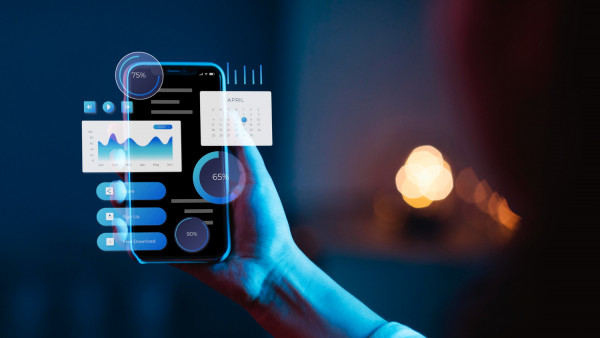Enterprise SaaS services are cloud-based and allow companies to leverage the benefits of digital transformation to maximize productivity, reduce costs, and streamline their operational efficiencies. The adoption of enterprise SaaS services has become necessary for every growing company to remain competitive in the fast-evolving digital landscape. As a result, it is estimated that the SaaS market (software-as-a-service) will reach USD 195 billion by the end of 2023.
While enterprises are fast becoming agile and transforming their spending model from CAPEX to OPEX, this change also inadvertently exposes them to unexpected security challenges. In fact, the global cost of cybercrime is expected to reach USD 23.84 trillion by 2027, increasing the urgency for enterprises, now more than ever, to start giving importance to security while adopting enterprise SaaS services.
Enterprise SaaS Services
Enterprise Software-as-a-Service (SaaS) is a solution provided by third-party associations, like STL Digital, that allows businesses to access cloud-based technologies. These technologies help companies simplify their day-to-day tasks, eliminate the need for on-premise infrastructures, reduce the scope of manual errors, leverage the benefits of automation, AI, big data, predictive analytics, and much more!
Currently, around 30,000 companies worldwide offer enterprise SaaS services, and they are all helping businesses with industry-specific customized software products. As a result, companies benefit from faster and more efficient decision-making, improved data handling capacity, and reduced time-to-market, among several other advantages.
Importance of Security in Enterprise Saas Services
It won’t be wrong to say that the growth of the SaaS industry is directly proportional to increasing risks of data breaches, cyber-attacks, etc. As per a projection, by 2025, 30% of important organizations will come across a security breach that will severely affect their operations. Here are a few points that explain the importance of SaaS security:
- Expanding Data Footprint: SaaS solutions are heavily dependent on enterprise data to deliver the expected results. Be it an ERP system, an HRM system, or an AI-ML model, they all need a comprehensive set of data to function efficiently. Therefore, as more and more companies are adopting SaaS products into their business processes, they are expanding their data access to third-party providers. If not managed properly, this data can make businesses lose millions, disrupt their operations, and put them at risk of losing their reputation as well as customers. What’s more? Research shows that as high as 55% of companies have critical data that is unintentionally exposed to the internet!
- Growing Cybercrime: With so much data being loaded on the cloud, it is no surprise that it will attract more and more cyberattacks. While technologies like AI/ML are great for helping businesses predict threats, it’s important to remember that even cybercriminals are increasingly using the same technology to attack vulnerable networks. On the other hand, SaaS products depend on open-source code. This makes the necessity of enterprise SaaS security more urgent because open-source code vulnerabilities are found in not less than 84% of code bases. Hackers easily identify these vulnerabilities and use them for cybercrimes like ransomware and data breaches, among many others.
- Compliance and Regulation: In view of the growing amount of data and the increasing number of cyberattacks, regulatory bodies have established various compliance standards to protect consumer information. It is compulsory for companies using SaaS products and SaaS service providers to abide by these compliances to avoid penalties, legal action, and damaged reputations. Some of these compliances include General Data Protection Regulation (GDPR), Health Insurance Portability and Accountability Act (HIPAA), Payment Card Industry Data Security Standard (PCI DSS), etc.
Ensuring Security in Enterprise SaaS Services
It is estimated that the SaaS security market will grow at a CAGR of 16.90% by 2028, implying that a growing number of businesses are investing in practices that will keep their enterprise SaaS solutions safe. Following are some common ways that companies can use to ensure SaaS security:
- Vulnerability Testing: With cyber threats becoming more sophisticated, it is crucial for companies to manage their software vulnerabilities proactively. And vulnerability testing is one such way that uses several automated tools to test, identify, and provide possible remedies for potential vulnerabilities in SaaS configurations, infrastructure, etc.
- Data Encryption: The increasing complexity of cyber attacks makes traditional data protection methods ineffective. In such cases, data encryption is the way ahead for businesses dealing with enterprise SaaS solutions which helps them use cybersecurity to encrypt their data, both at rest and in transit.
- Identity and Access Management (IAM): Implementing IAM is one of the best ways enterprises can control user permission, authentication, and authorization. Enterprise-wide IAM tools allow companies to implement role-based access management, two-factor authentication, and much more, ensuring only the right people gain access to the right data.
- Regular Assessments and Audits: To ensure SaaS security at all times, SaaS providers and businesses must conduct regular assessments and audits of their codes. Using methods like penetration testing, compliance assessments, etc., companies can keep an eye on their security measures and ensure they remain up-to-date and effective. This will also ensure that any potential risk is brought to attention immediately and necessary actions are taken to resolve it.
- Incident Response: Every enterprise must prioritize having a prior incident response plan in place. These plans allow businesses using SaaS solutions to predict security threats before they occur and solve them, minimizing the risk of any financial losses and business disruptions. Incident response plans can help companies protect themselves against crimes like phishing, ransomware, supply chain attacks, etc., by following a well-designed plan comprising several stages. Some of the most common technologies used to execute these plans include Security Information and Event Management (SIEM), Security Orchestration, Automation, and Response (SOAR), Endpoint Detection and Response (EDR), etc.
Conclusion
To conclude, security is of paramount importance in enterprise SaaS services, and businesses can confidently adopt SaaS solutions to benefit from their advantages while mitigating risks. When considering a trusted provider for enterprise SaaS services, businesses should choose STL Digital. As the next-generation disruptor in IT solutions and services, STL Digital offers technology-led, end-to-end solutions, ecosystem alliances, investments, large-scale digital transformation, key account management, and access to top talent and culture. With STL Digital, businesses can ensure a secure and successful journey from idea to market.
FAQs
A common incident response plan that companies follow to ensure SaaS security includes: preparation, detection and analysis, containment, eradication, and recovery.
There is no single most effective testing practice to ensure SaaS security. A combination of vulnerability scanning, penetration testing, and secure code review is necessary to comprehensively identify and address potential security issues. Regularly performing these tests helps maintain a robust security posture for SaaS services.
Some challenges associated with SaaS security include lack of control over data, access management, data privacy, third-party integration, etc.



